Advancing technology and increasing web literacy are turning a “linear” customer journey into an increasingly fragmented one. Here are four steps to creating an engagement-based conversion funnel to overcome this growing marketing challenge.
The web is changing fast creating new challenges to online businesses. Until recently, marketers were able to clearly map out the customer’s journey that would take web users from click through to a landing page to completing a sale.
These days, the buying journey is much more complicated and fragmented. Customers are equipped with many more devices and much better knowledge of their options than just a few short years ago.
Thanks to social media, various devices, and smarter digital advertising, it is no longer easy to guide the customer through the buying process. One of the well-publicized examples of the new buying behavior is one consumer’s path to buying a car that consisted of more than 900 digital interactions including searches, visits, video views, and clicks.
So how to still convert site visitors into buyers when they have so many options to consider? Here’s one strategy you can use:
Step 1: Create an engagement asset
Let’s face it: Around 90% of your current site audience is not ready to buy from you just yet.
Your site visitors may be at a research phase or they may lack trust in a new brand or they may have been looking for an entirely different solution.
Whatever the case is: We are lucky if we convert 5% of our site visitors into actual customers.
What about the 95% of the traffic that we have built?
That’s where the idea of secondary products come in – We need to engage our site visitors first before trying to sell to them again. This secondary asset needs to combine the following criteria:
- It needs to be free or freemium (to make it an easy sell)
- It needs to complement our primary product (to naturally lead many of these engaged users into buying it)
- And more importantly, it needs to rank in Google (and hopefully generate visibility from alternative assets) to ultimately become a top-of-the-channel lead generator, not just an engagement channel. That’s where this overall asset will really pay off.
Examples of these secondary marketing assets are everywhere. Under Armour has MyFitnessPal app that funnels health-minded users into buying fitness gear. American Express has been engaging business owners with their secondary Open Forum community. In our own industry, both Ahrefs and Moz offer SEO toolbars that forever tie browser users to their sites:
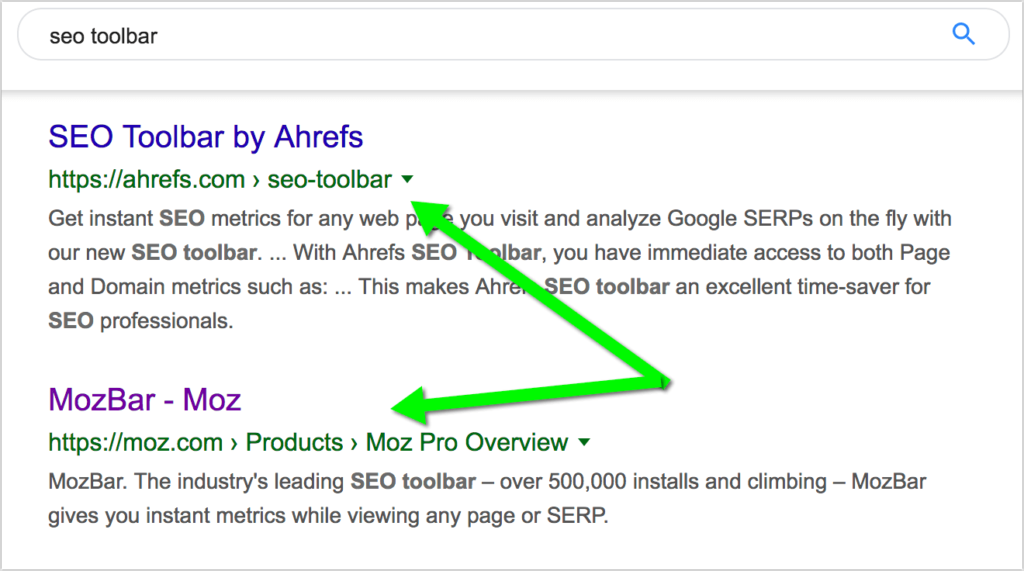
The good news is, creating a secondary asset should neither be expensive nor time-consuming. Chances are, you already have assets that can be expanded into a solid product of its own.
Content re-packaging is the first step I’d consider here. That’s what I personally did turning my text articles into videos (and back) to put together comprehensive multi-format video courses and create additional assets to create an omnichannel marketing strategy.
For smaller businesses with tighter budgets, here are a couple of tools allowing you to easily and affordably create an engagement asset.
Build Fire is an easy app maker allowing you to put together mobile apps to support your marketing assets. You can use a handy visual editor to add content and design your apps and use a variety of engagement tools including push notifications and drip campaigns.

Kajabi is a solid and affordable platform that allows anyone to create online courses and landing pages with no technical knowledge required. It supports freemium and multi-tier pricing models and offers lots of engagement tools, from in-course surveys to email automation to efficiently interact with your users.

Kajabi offers many marketing automation features built into the platform, but perhaps the most useful is what the company calls “Pipelines,” which are essentially multichannel automation workflows for turning your landing pages, email drips and pitch messages into powerful funnels. In addition, Kajabi’s “Pipeline Blueprints” are pre-built pipeline templates, which you can tweak and customize for your liking, depending on the use case, whether it’s a product launch, a webinar invitation or a timely sales promotion.
Step 2: Integrate your engagement asset into your content marketing campaign
Obviously you don’t want your engagement asset to distract your site users from buying your primary users, so promoting it through your major landing pages is not a very good idea. Your content-based pages (for example, blogs) are a great place to market your engagement asset, especially if you align your content marketing assets with your engagement asset.
Hubspot is a great example of using their blog to engage, rather than to sell right away. You’ll seldom see a CTA buy their software inside their articles. Instead, they build context around their freebies and invite readers to become part of their community:
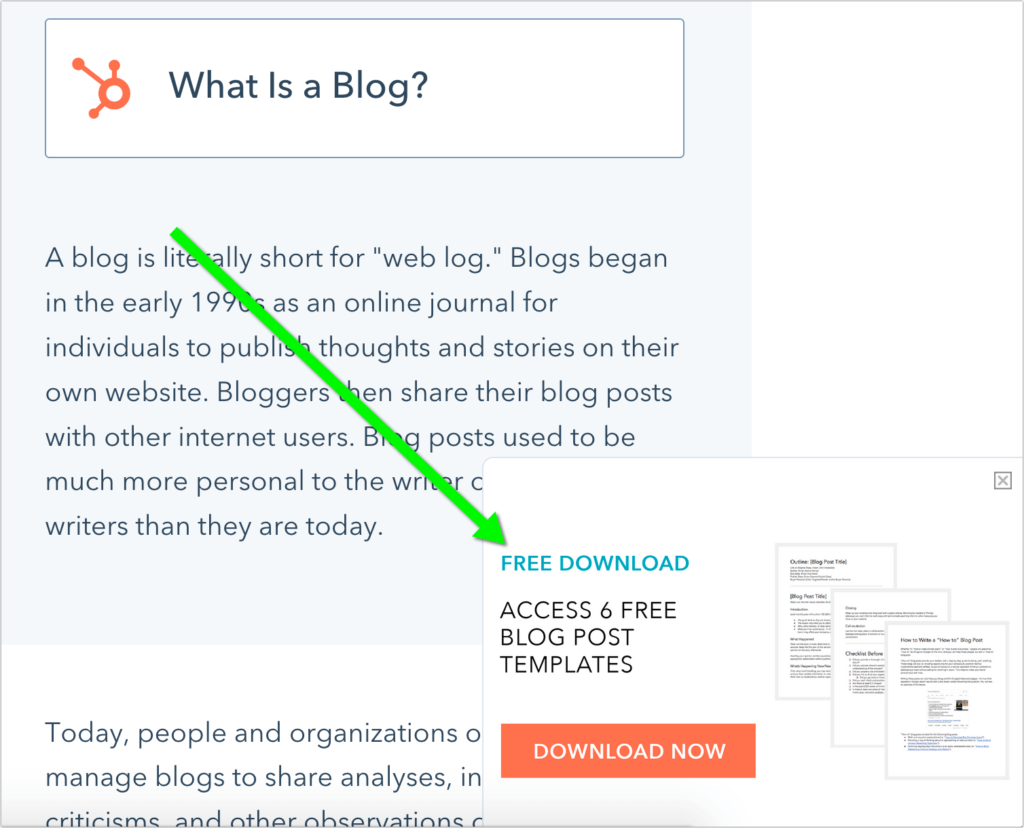
The idea is that your CTA should match the reader’s intent and hopefully tie them to your brand (either through an email optin or “by taking your brand home”, for example, installing an app or joining your community which brings longer-term commitment).
If you use my re-packaging tactic, you’ll create enough content to both create an engagement asset and write public articles to supplement it. For example, when creating a video tutorial, you can:
- Expand and structure your script to create a text tutorial to publish on your blog (and funnel your blog readers into enrolling with your course)
- Turn your article into a PDF document for your existing students to download (and follow along as they watch your video).
- Create quick video takeaways to publish on YouTube, Facebook, and Instagram to build brand awareness (as well as convince those viewers to join your course too).
Building an effective context around your engagement asset is key to getting its rank in Google and turning those readers into your site members (and ultimately brand advocates).
To help you out, here’s a trick on building an actionable context around your CTA: Text Optimizer has a separate section showing “Action concepts”.
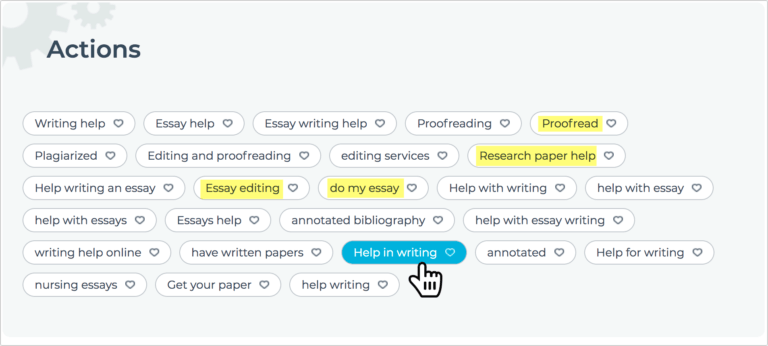
Use these suggestions to find inspiration in writing your calls-to-action as well as creating context leading people into clicking it.
Step 3: Use artificial intelligence to market your engagement asset
Artificial intelligence and machine learning are taking the marketing industry by storm. From smart product recommendations (that guess what you need before you realize you do) to advanced chatbots that instantly and independently help your customers solve their problems – online marketing is being disrupted by smart technology.
Content marketing is no exception. You can use self-learning software to point your blog readers to your engagement asset exactly when they are ready to engage.
Alter is a smart recommendation engine that can help you set up your engagement channel. You can customize its settings to invite your site readers to become your students or download your asset. For example, you can try and engage people who spent some time reading your article:
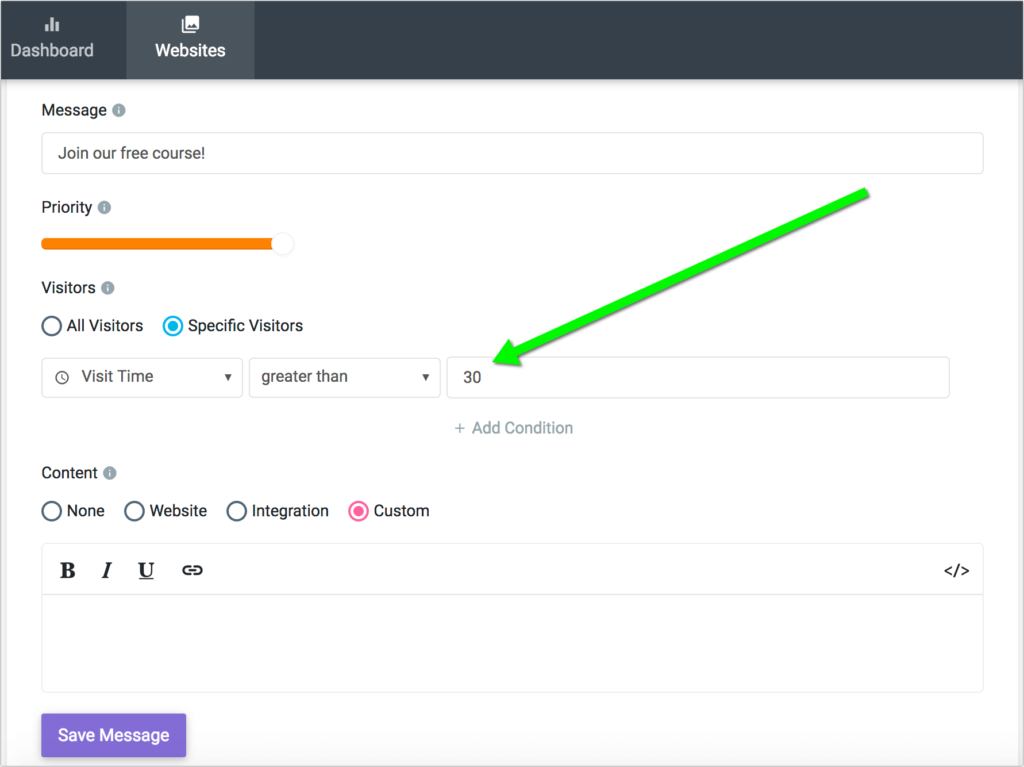
Additionally, you can use chatbot software to suggest your engagement asset to users whenever they are asking for more information. Mobile Monkey can help set up the process:

[Here’s how Mobile Monkey can get your visitors sign up to your webinar, for example]
Step 4: Use retargeting to turn engaged users into actual buyers
Finally, how to turn those engaged users into your customers, outside of your newly created engagement asset (they may have downloaded or joined). Re-targeting is your answer. You can use retargeting or the custom audience option on Facebook to serve your primary product ads to those who visited your engagement asset landing page or joined your membership site:
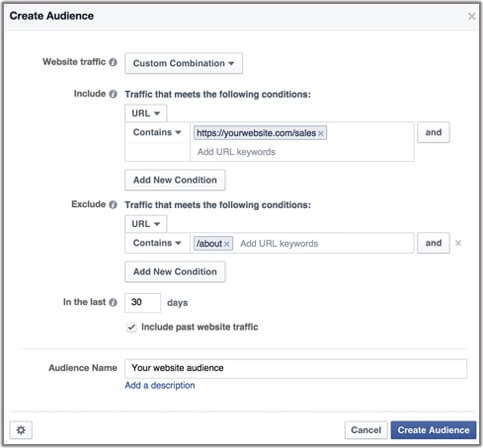
You can also use re-engage those engaged users on your own site with Finteza that allows to set up a retargeting campaign to serve custom ads to those who downloaded your asset or installed your app:
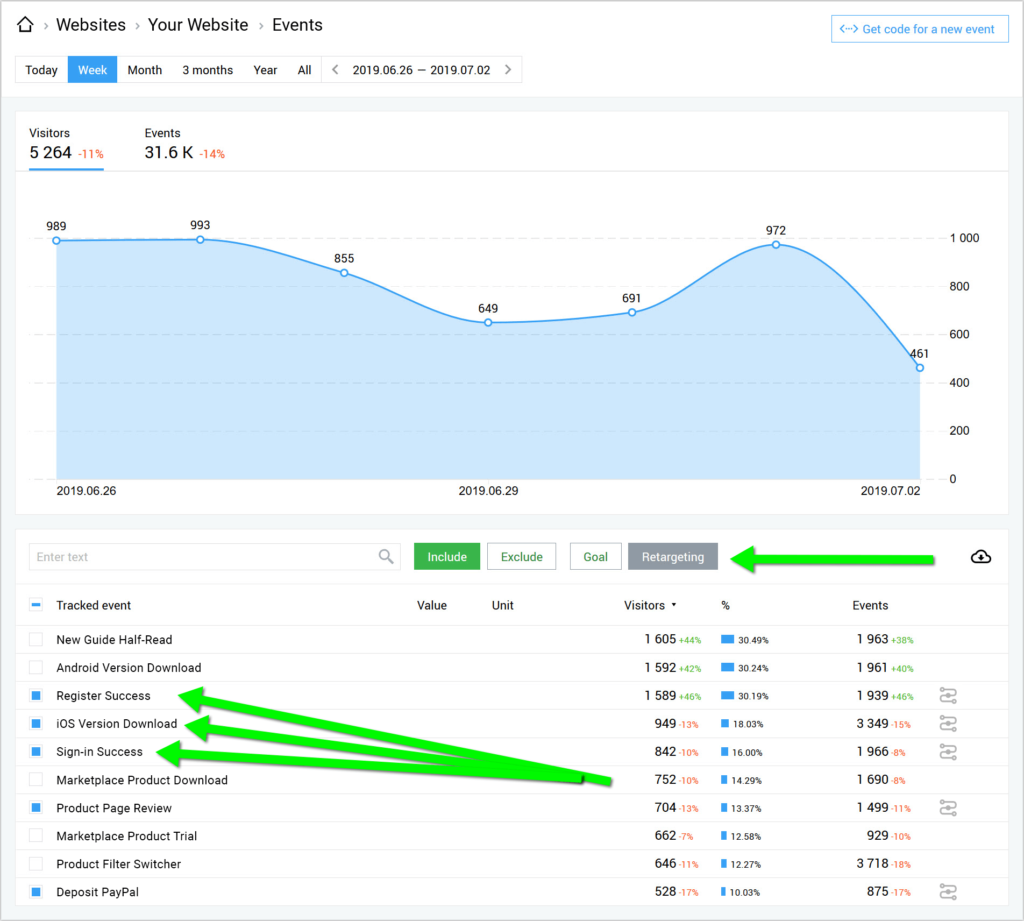
[Read more about Finteza retargeting here]
Conclusion: Turning your site visitors into customers
With higher competition and advancing technology, buying journeys have become much more complicated and fragmented. This article offers a way to put it somewhat under control: Engage your site users first and then turn them into customers later.
Apart from creating an alternative conversion funnel, this approach has more benefits, including building brand loyalty (those engaged users know your brand well prior to buying) and creating more marketing channels (those engagement assets can become lead generators by bringing in additional visibility from search engines and social media platforms).
Ann Smarty is the blogger and community manager at Internet Marketing Ninjas. She can be found on twitter @seosmarty
The post Four steps to create an engagement-based conversion channel appeared first on Search Engine Watch.
from SEO – Search Engine Watch https://ift.tt/2KocNKP
via IFTTT

No comments:
Post a Comment